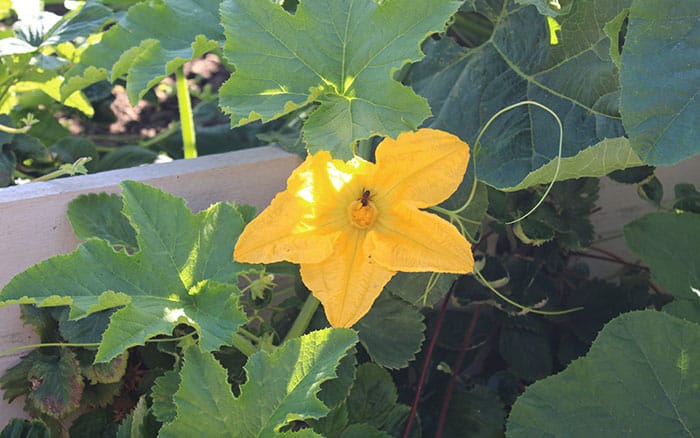When growing pumpkins, they may start to look like the triffids, which is why pruning the vines can keep things in check. Trimming the vines can increase the sizes of pumpkins and lead to a more abundant harvest. This is exactly what you want come autumn, ready for pumpkins to use in delicious dishes or for carving Jack o’ lanterns.
Pumpkin runners
Reducing the number of vines will stop the foliage from choking other plants. Meanwhile it increases air circulation to reduce the risk of diseases spreading. Some of the younger fruit can be trimmed away to allow the plant to focus its energy on the pumpkins that are still on the plant.
On pumpkins there’s the main vine, which is the one that’s attached to the roots. This is the thickest one compared to the others. Then, from the main vine there are runners, which are the secondary vines. If these are removed, they can be planted up and grow their own secondary roots with the right conditions.
Then, the runners can even produce their own runners which are called tertiaries – the cycle goes on. However, it’s ideal to remove these to encourage the plant’s energy into the main and secondary vines.

What next?
If, like mine, your pumpkin patch is growing wildly, snip off a few runners to give the rest of the fruit the chance to grow their best. Rather than discarding them in the compost pile, these can be grown in a separate spot.
Plant them up in a bed filled with peat-free all-purpose compost. A top tip when planting pumpkins is to plant an empty plant pot next to them. This is because pumpkins are thirsty plants. When watering, the plant pot can be filled too which will gradually soak down into the soil for the roots.
Whilst watering regularly, feed every two weeks with a high potash fertiliser like a tomato feed when the fruits start to swell. This will give the nutrient boost needed to encourage fruits to grow bigger and better.

Crop rotation
When planting pumpkins, bear in mind crop rotation. They are members of the cucurbit family, of which common pests include cucumber beetles and aphids. Therefore, planting pumpkins, other squashes, or cucumbers in the same spot year-upon-year can lead to pests multiplying.
Pumpkins don’t necessarily need to follow or precede any specific crop. However, it’s worth noting where they’re planted to you can switch positions the following year.


Leave A Comment